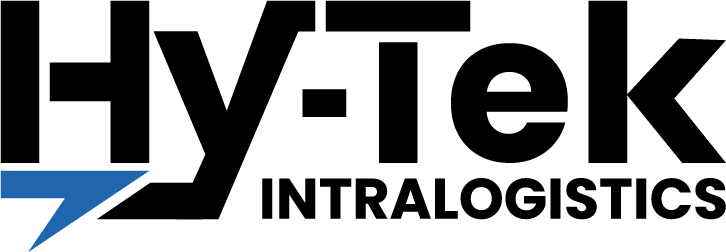Insights from Sarah Hollinger
IT leaders are under pressure to deliver speed, scalability, and security without adding complexity or risk to their technology environment. As automation, AI, and real-time data become more central to supply chain operations, as well as total business operations, CIOs and IT Directors are reevaluating how their systems connect and scale.
Heavy custom integrations are becoming a thing of the past. More IT teams are moving toward unified, modular platforms that streamline operations and reduce long-term maintenance. By building a technology stack that fits together like Lego® bricks, organizations can gain flexibility without giving up control.
In this blog, we take a closer look at why unified platforms are replacing custom code, how they connect with ERP and BI tools, and how they support better security, compliance, and performance at scale.
The Hidden Costs of Custom Integration
Custom integrations often seem like the fastest path to connect systems and solve specific workflow gaps. But under the surface, these projects introduce hidden costs that erode IT resources and delay innovation.

According to MuleSoft’s 2021 Connectivity Benchmark report, IT teams spend 68% of their time “keeping the lights on,” with over one-third of that time devoted to designing, building, and testing custom integrations. That means roughly 23–25% of IT effort is tied up in maintaining existing connections, significantly limiting bandwidth for innovation, robotics, AI, or digital transformation.
Unified Platforms Deliver Flexibility Without Lock-In
Unified platforms offer a more scalable approach to integration. Instead of connecting each system individually, a unified platform acts as a central layer that ties together automation systems, WMS, ERP, labor and reporting tools, and more.
Hy-Tek’s IntraOne Integration Hub provides this kind of foundation. It’s designed to help IT leaders orchestrate their technology stack without relying on brittle, point-to-point connections.
Think of it like Lego® bricks. Each system becomes a module that can be easily added, removed, or reconfigured without disrupting the rest of the operation. As your business changes, your infrastructure can adapt.

With a unified platform, IT teams can scale operations while keeping their environment streamlined, manageable, and secure.
ERP and BI Compatibility as a Strategic Advantage
Most IT leaders design their technology stacks around a core ERP platform. But even the most robust ERP systems, whether Microsoft Dynamics 365, SAP, Oracle, or WorkDay, require specialized execution tools to manage warehouse workflows, automation, and real-time data.
The challenge is strategically, while being mindful of risk incurrence, integrating these specialized systems without creating fragmented data pipelines or introducing costly customizations.
That’s where IntraOne fits in. It’s designed to work with your ERP, not around it. Whether you’re running Dynamics 365 F&SCM, Business Central, SAP, Oracle, or WorkDay, IntraOne connects execution workflows directly to your ERP environment through modern technology.
It also simplifies how data moves into BI tools; instead of custom-built pipelines, IntraOne uses a low-code/no-code interface and a structured SQL database to keep data clean and accessible. IT teams can deliver real-time insights to leadership without wrestling with backend complexity.
Security, Compliance, and Data Control
As technology ecosystems grow, so do concerns around data fragmentation, cybersecurity, and compliance. Fragmented systems, supported by customizations and tribal knowledge, create blind spots making it harder for IT teams to enforce access controls, track system changes & updates, and ensure compliance with industry standards.
IntraOne addresses these concerns with enterprise-grade security features, including:
- Centralized access control with role-based permissions
- API governance and audit logging for traceability
- Cloud and hybrid deployment options to meet the needs of compliance-sensitive industries, such as healthcare and pharmaceutical
IntraOne is also SOC 2 Type 1 certified, demonstrating our commitment to high security and data management standards.
What to Look for in a Future-Proof Warehouse Platform
Choosing the right warehouse execution platform is critical for IT leaders driving digital transformation. Below is a checklist to evaluate whether a platform will scale with your business and integrate seamlessly across your technology stack:
- ERP-agnostic, API-first architecture
- Real-time data pipeline compatibility with BI tools (Power BI, Tableau, Snowflake)
- Modular, composable functionality that allows you to start small, and scale fast
- Intuitive for both IT teams and operational users
- Implementation partners that can help design and implement your business objectives
- Clear SLAs and responsive post-go-live support
- Enterprise-grade security and compliance built-in
Conclusion: Build for Change, Not for Complexity
In today’s fast-paced, automation-driven landscape, custom-coded integrations create unnecessary complexity and risk. IT leaders are turning to unified platforms like IntraOne to streamline operations, integrate seamlessly with ERP and BI tools, and maintain control over their technology environments.
With IntraOne, you don’t have to sacrifice security or scalability to gain agility. Future-ready supply chains are orchestrated, not custom-coded, giving IT teams the flexibility to evolve alongside business demands.
See the IntraOne Architecture

Want to see how IntraOne integrates with your ERP, BI tools, and automation stack, securely and to scale?





